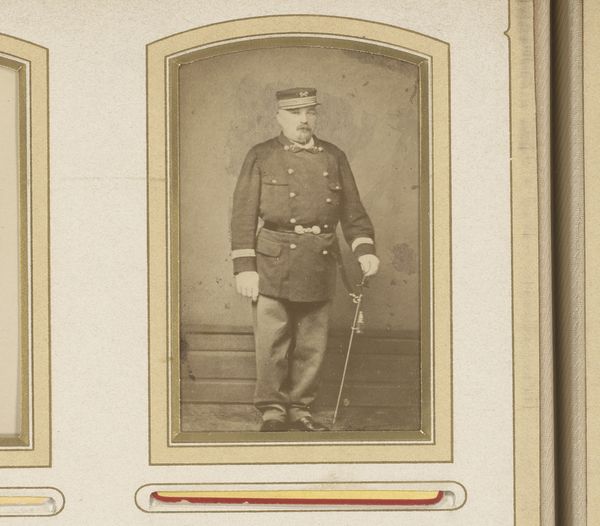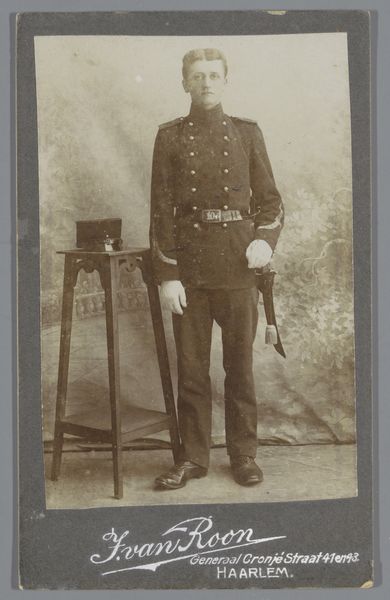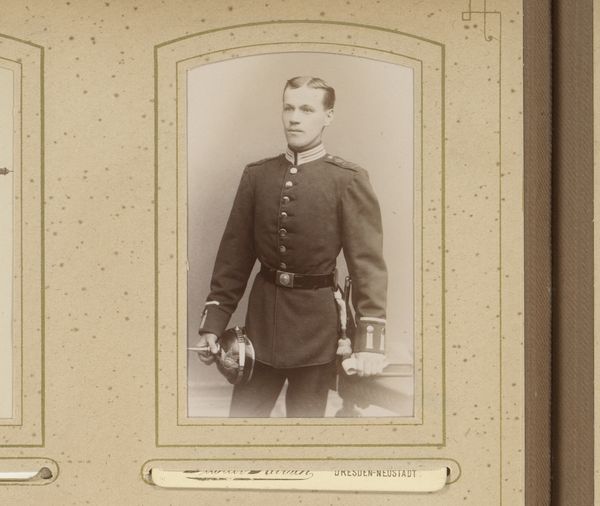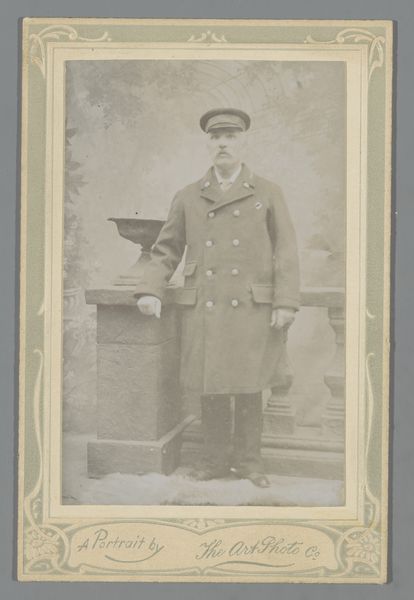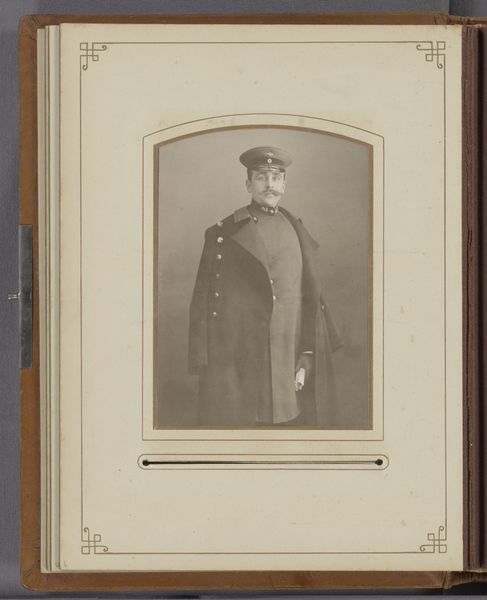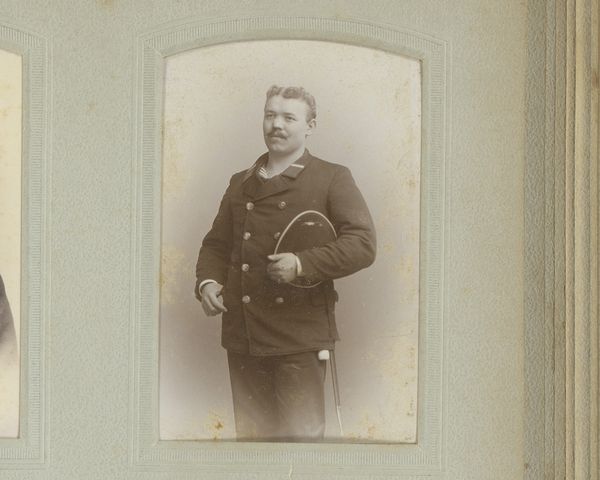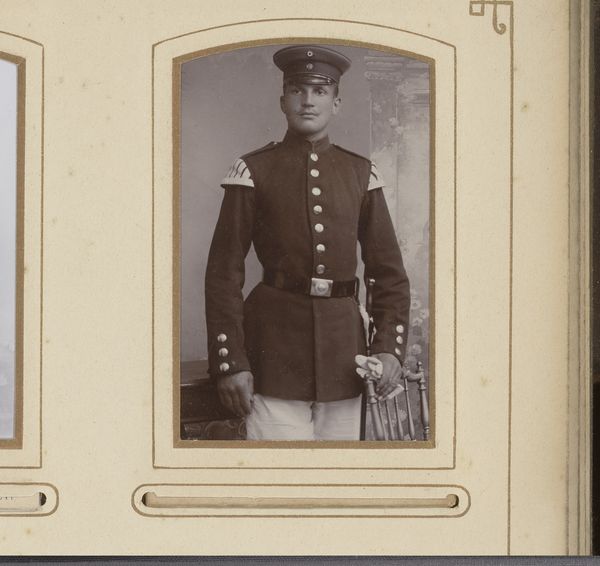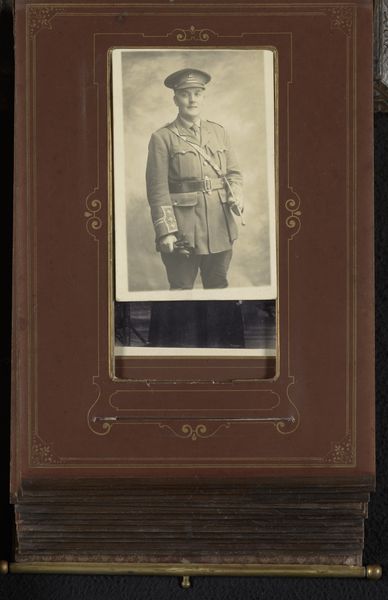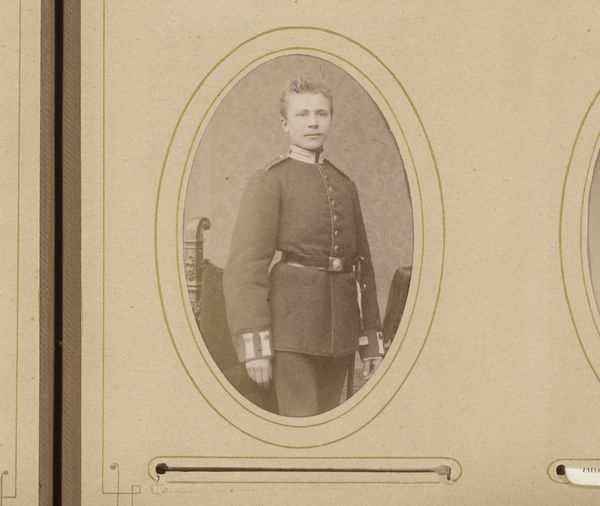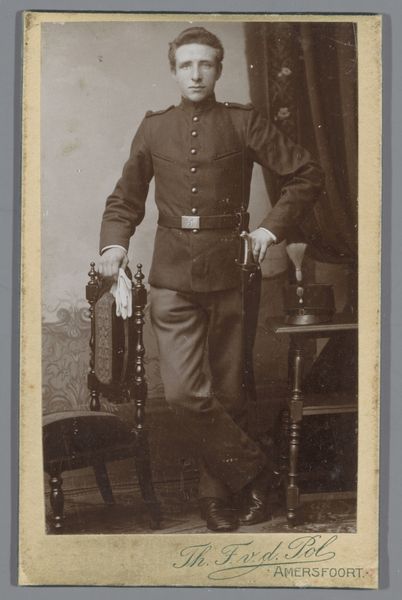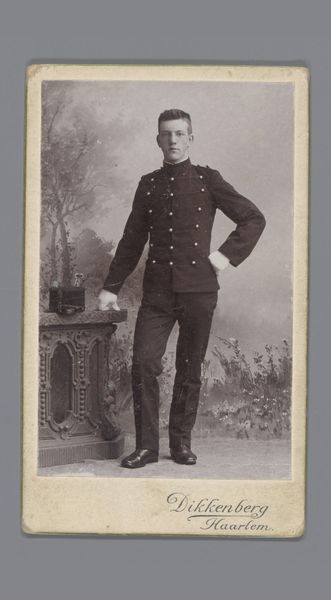
photography
#
portrait
#
photography
#
genre-painting
Dimensions: height 86 mm, width 52 mm
Copyright: Rijks Museum: Open Domain
Curator: This is a striking portrait photograph, possibly taken in 1899, titled "Portret van een staande man in militair uniform"—Portrait of a Standing Man in Military Uniform. It’s credited to Atelier Billström. Editor: The first thing that strikes me is the sepia tone and the formal pose. There's a certain melancholic weight to it, wouldn’t you agree? Almost like a premonition of what that uniform could mean for this young man. Curator: Absolutely. The sepia tones lend an antique air, and the uniform is incredibly telling. Notice the precise arrangement of buttons and the stern, almost stoic expression. These details communicate a sense of duty and self-discipline—perhaps even an ideal of military honor. Editor: It is very austere. I'm drawn to the sword and decorative chain. These were mass produced objects. What materials were deemed good enough for soldiers to brandish? Where and by whom were they fabricated? Curator: That's a very pertinent question! And I agree with your view on the production element as an object. It's about the cultural status, the military regalia, but also an individualized, precious keepsake made using a photography studio. I see his bearing and think of the weight of tradition, expectations...what did symbols of duty like this really represent? Editor: To me, the uniformity signifies more about industrial progress at this period than ideas around valor. What were the resources used to create that uniformity, for all members of the ranks? And was any attention paid to working standards in those environments? The chain's length makes me wonder: how restricted would its movements have felt? How did all that hardware effect a worker, or wearer's autonomy? Curator: You certainly give food for thought. By focusing on production you're urging us to think about who benefited from his, or the soldier's, image—or perhaps more profoundly who made these visual cues resonate through repetition? The makers and photographers had such a central role. Editor: Yes. How are the materials employed used to convey messages about production standards and the cultural meanings that accumulate as items are used and replicated? What's valued about the objects? To be utilitarian, or a symbol? Both, no doubt. Curator: Thank you! I'm now even more convinced that this man embodies both national pride and perhaps a hidden, internalized understanding of industrial standardization of conflict and its emotional toll. Editor: Precisely. There are many hidden layers when thinking about it as just photography, but also a confluence of making practices, as this photographic piece is itself, just like a chain, a link to an entire process of production, distribution, and the meanings that become attributed.
Comments
No comments
Be the first to comment and join the conversation on the ultimate creative platform.
